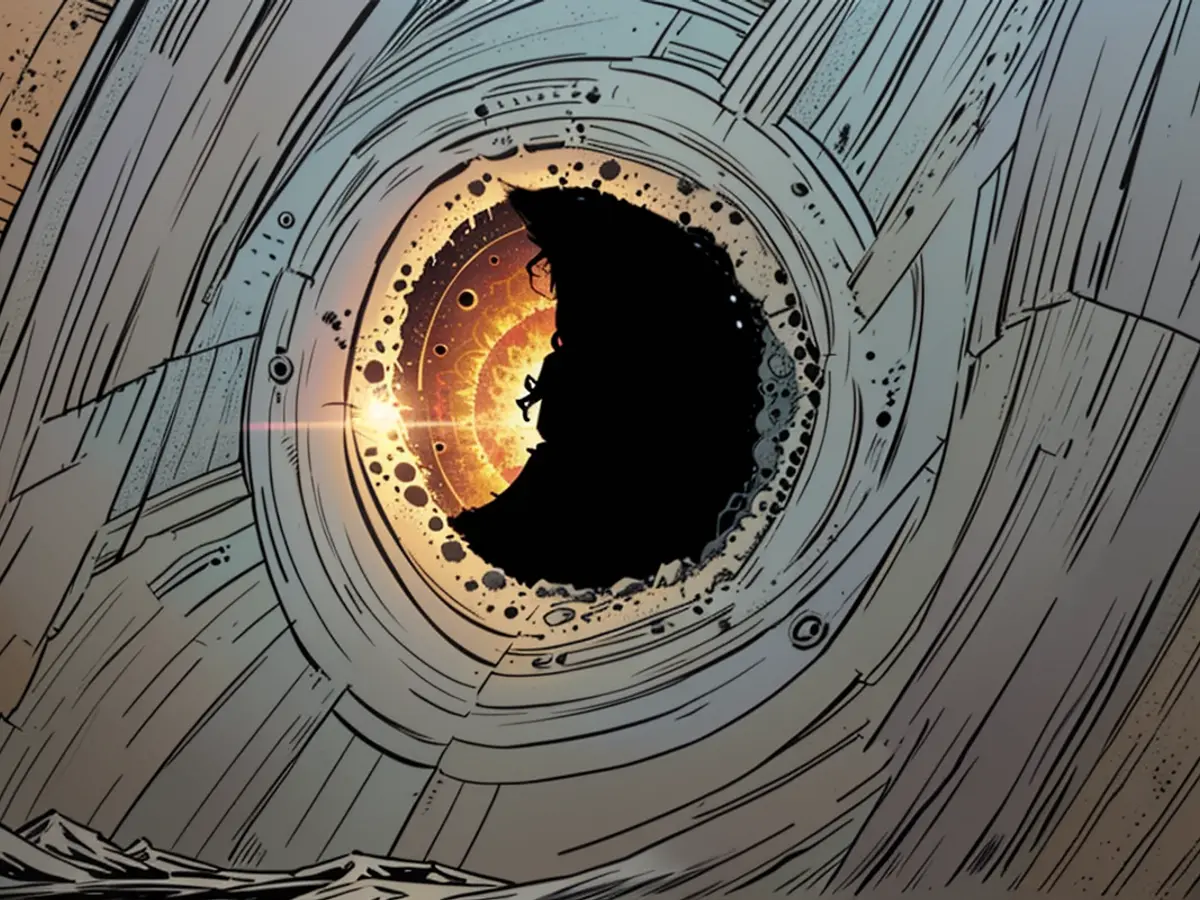Radar images - Researchers gain first access to a moon cave
Over 200 deep, shaft-like pits on the Moon's surface have been discovered by researchers from images of lunar probes so far. Now, a team from Italy and the USA has managed for the first time to provide evidence that such "pits," as they are called, can lead to larger caves.
Radar images show a 30 to 80 meter long and 45 meter wide cave that originates from the so-called Mare Tranquillitatis Pit, the largest known pit, located in the same named plain. Such caves would be ideal for the construction of manned lunar stations, as they offer protection from radiation and moderate temperatures, according to the scientists in the journal "Nature Astronomy."
Openings can lead to caves
The pits are believed to be openings in lava tubes from the early Moon. Such tubes exist on Earth as well. They form when thin lava flows into channels under a low slope. The lava cools and solidifies on the surface, forming a lid over the lava stream. Once the lava stream dries up, a hollow tube remains.
"It was unclear until now whether the openings still provide access to longer rooms in the old lava tubes," explain Leonardo Carrer from the Universität Trient in Italy and his colleagues. The team therefore chose to investigate the largest known pit. They eventually found the radar images of the "Lunar Reconnaissance Orbiter" spacecraft from 2010.
The radar images show a bright strip – that is, a stronger reflection of radar signals – that extends from the Mare Tranquillitatis Pit in a westerly direction. The team simulated the reflection of radar signals from various caves using computers. It turned out that the bright strip could be explained by a hollow space located 130 to 170 meters below the surface and 45 meters wide, which might extend up to 80 meters from the pit.
Caves would be ideal for lunar stations
The scientists emphasize that the Lunar Reconnaissance Orbiter's radar was not designed to detect such caves. Its resolution was too low to search for caves at other pits. "It was not possible for us to identify other caves at other pits," so Carrer and his colleagues.
However, the discovery at the largest known pit on the Moon shows that the method could be used for such a search. The team therefore recommends sending a probe with a correspondingly specialized radar equipment into the lunar orbit. "A complete catalog of all known pits would show us which locations are best suited for the construction of a lunar base," the researchers say.
Since the Moon has neither an atmosphere nor a magnetic field, astronauts are unprotected from radiation from space. Caves would provide effective protection. They would also shield a lunar station from the strong temperature fluctuations on the Moon's surface. The temperature can reach up to 130 degrees Celsius during the day, while it drops to minus 55 degrees at night.
"Furthermore, our method can also be applied to Mars," the scientists point out. "Since over a thousand such pits are already known there."
- The discovery of potential caves in the United States of America's lunar missions could provide significant advantages, offering protection from extreme temperature fluctuations and radiation.
- It's interesting to note that although Celestial bodies like the Moon lack atmospheres and magnetic fields, the existence of these caves in Italy's and the USA's lunar study could serve as natural settlements, providing a moderate temperature environment.
- On a related note, the findings on the Moon's potential caves could pave the way for future Mars exploration, considering the existence of over a thousand similar pits on the Italian-named martian region.







